| MAN A95 (Euro 6) – Second Production Batch |
|
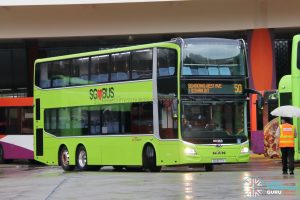 |
|
| Manufacturer | MAN Truck And Bus |
| Bodywork | MAN Lion’s City DD (Gemilang Coachworks) |
| Years in operation | 2020 – Present |
| Operators | SBS Transit SMRT Buses Tower Transit (Former) |
| Technical Data | |
| Length | 12 metre |
| Engine | MAN D2066 LUH-58 |
| Transmission | ZF EcoLife 6 AP 2000 B |
| Accessibility | Low Floor & Wheelchair-accessible |
| Emission Standard | Euro VI (EGR+SCR) |
In July 2018, the Land Transport Authority (LTA) procured 111 units of the MAN A95 (Euro 6) double-deck bus, as part of Bus Contracting Model fleet renewal and expansion efforts.
These buses were procured under Contract PT322 (Euro 6 Double Deck Diesel Buses) for ~S$54 million, in a tender awarded to ST Engineering Land Systems Ltd.
This is the fifth batch of MAN A95 buses supplied for the Singapore bus industry, as well as the second batch of Euro VI (or Euro 6) MAN A95 buses since the initial 3 batches were delivered with Euro V engines. These buses bear a large number of similarities with the fourth batch of MAN A95 buses, such as their powertrain components and interior cabin layout. Minor design changes are aplenty and summarized at the end of the article.
These buses entered revenue service on 30 March 2020 with SMRT Buses. All 111 units were registered by 19 October 2021. Registrations were at a slow pace, owing to a large number of excess buses currently in storage.
Check out the main article: MAN A95 for more technical-related background information on the bus model.
MAN A95 (Euro 6) – Second Production Batch
The 111 MAN A95 Euro 6 Batch 2 buses are registered as SG6172K – SG6282B. Registration began on 20 March 2020 with the first unit SG6172K leased to SMRT Buses. The last few buses were registered in October 2021. The pace of bus registrations was slow owing to a large excess of buses in the LTA storage fleet.
These buses entered revenue service on 30 March 2020, with the deployment of SG6172K & SG6173H on SMRT City Direct 670 in the morning and SG6172K on Service 969 later in the afternoon.
| Basic Technical Specifications | |
| Engine | MAN D2066 LUH-58, 10518cc Twin-stage turbocharged & inter-cooled Power/torque rating of 320 hp (235 kW) @ 1900 rpm / 1600 Nm @ 1000 – 1400 rpm |
| Emission Standard | Euro VI-compliant MAN PURE DIESEL® Exhaust Gas Recirculation (EGR) process and MAN SCRT Selective Catalytic Reduction (SCR) exhaust after-treatment process, hence requiring diesel exhaust fluids such as AdBlue. Meets the latest Euro VI emission standard. |
| Transmission | ZF EcoLife 6 AP 2000 B gearbox, six-speed automatic |
| Bodywork | MAN Lion’s City DD Bodywork Chassis built in Germany, MAN’s Lion City DD bodywork supplied and assembled by Gemilang Coachworks, licensed by MAN. |
| EDS | Luminator Ultima Electronic Display Sign (EDS): Mobitec MobiLED Ultima EDS (Front) Orange LED Matrix design 192cm × 32cm size, 200×26 resolution Gorba imotion LED.e TOPSMART EDS (Side & Rear) Orange LED Matrix design, 32×16 display resolution All EDS units connected to a Luminator Basic controller |
| PIDS | LAWO INFOtainment Passenger Information Display System (PIDS) Two interior-facing units (29”) & One Exterior-facing unit (21.5”) Interior & Exterior Speakers |
| Driver Assistance | TNT Surveillance T-Guard – Forward collision warning system (T-FA Front Alert Camera) – Side collision warning system (T-SA Side Alert Cameras) – Anti-Fatigue system (T-DA Driver Alert Camera) – T-SEEDS telematics system |
| Additional Specifications | Masats door systems iris IRMA MATRIX Automatic Passenger Counting System (Entrance & Exit doors) USB Charging Ports (with covers) Vogel Industrie System 750/3 seats Door movement area sticker Tree Guards |
| Licensed Capacity | Seating (Upper deck): 57 | Seating (Lower deck): 25 | Standing: 57 = 139 total Not including 2 foldable seats, 2 wheelchair bays |
These buses are built to the latest specifications by LTA for public buses, with numerous minor design changes as compared to the earlier batch of MAN A95 Euro 6 buses. These specifications also apply to the later bus procurement by LTA such as the 60 electric buses and 100 3-Door Euro 6 Diesel Double Decker buses.
SBS Transit leased their first MAN A95 Euro 6 Batch 2 buses on 1 April 2020, with the registration of SG6175C, SG6178U & SG6179S. Five buses (SG6176A, SG6177Y, SG6181J, SG6183D, SG6184B) entered revenue service on 6 April 2020, operating on Service 50.
Tower Transit leased their first MAN A95 Euro 6 Batch 2 buses on 1 October 2021, with the registration SG6247D from LTA Storage (Bulim Bus Depot) for the Sembawang-Yishun Bus Package. Additional buses were transferred from SMRT Buses as part of the Sembawang-Yishun Bus Package.
Exterior:
The exterior styling of the bus bears mostly similar styling elements from the previous batch of MAN A95 buses for the front and rear. However, the large grey stripe on the left side of the bus is truncated before the lower deck window panels.
Further distinguishing features include tree guards on the upper deck, and a smaller exterior-facing Passenger Information Display System (PIDS) at 21.5” (previously 35.8”). The smaller PIDS mounted in the same location meant that the open exit door no longer overlapped with the PIDS.
With the new specifications, the wheelchair-accessible and stroller-folding stickers are now placed on the exterior of the bus.
Interior:
Lower Deck
The lower deck of the bus features 25 permanent seats. Being a low-floor bus, the bus offers step-free access from entry/exit doors until the last row of seats. A staircase behind the driver’s cab connects the lower and upper decks.
Like most double-deck buses in Singapore, the MAN A95 (Euro 6 Batch 2) buses are configured with two doors: an entrance door at the front, and an exit door in the middle. The entrance doors are conventional inward-swinging leaf doors, while the exit doors are outward-swinging sliding plug doors. They are supplied by Masats S.A..
Seats were supplied by Vogel Industries of Malaysia (Model: System 750/3) in sky blue, with priority seats in red. The seat covers are made of a high-friction PVC material that offers greater seating comfort over older bus seats. Seats in the previous batch of buses had the aisle seats in grey and window/rear seats in blue.
The bus features two wheelchair bays: one behind the front left wheel well (“front”), and the other located opposite the exit door (“rear”). They each accommodate one passenger-in-wheelchair (PIW), and are also equipped with USB charging ports, a foldable seat and a stowable armrest. A stroller restraint system is installed on the forward wheelchair bay.
Priority seats, which are indicated in red seat covers and accompanying stickers, occupy the first row after the exit door.
Grab poles and handgrips are located on both sides of the aisle. All seats also have hand grips to provide commuters with additional support. Metal stanchion poles and handlebars bear a brushed metal finish.
Bus stopping bell-pushes are located around the bus cabin, either mounted to stanchion poles or on the pillars in-between windows, and emergency hammers are also located on these pillars. Stanchion-mounted bell pushes near the entrance and exit door now come with a yellow coated area above and below the bell push for enhanced visibility, similar to that used on the Volvo B5LH.
The seating layout at the rear is similar to the most double-deck buses configured for Singapore, with facing seats in-between wheel arches and more facing seats at the last row, which seats 5 passengers. As with all earlier batches of MAN A95 buses, headrests are not provided for the last row of seats.
The wheelchair ramp now comes with a spring-loaded pull handle for easier deployment by Bus Captains. The previous batches of buses only had a small recess at the side, which made it more difficult to operate.
New grab poles at the exit also benefit the less mobile, offering more support when alighting from the bus.
Upper Deck
The upper deck of the bus seats 57 passengers. Seats are arranged in conventional four-abreast, with a central aisle running the length of the bus.
Grab poles run the length of the aisle for commuters moving around the bus. All seats also have hand grips to provide commuters with additional support.
Bus stopping bell-pushes are located around the bus cabin, either mounted to stanchion poles or on the pillars in-between windows. Emergency hammers are also located on these pillars.
Staircase
The staircase allows for passenger movement between the lower and upper decks of the bus. A seat counter (LED number display) on the lower deck displays the number of available seats on the upper deck. The staircase is designed with two flat staircase landings (“straight staircase”) and a small triangular viewing window.
Additional Features
Driver’s Compartment
The layout of the driver’s compartment is largely similar to previous batches of MAN A95 buses before it. CCTV monitors have been relocated from the lower left (near the farebox) to the overhead controls. In turn, the Trapeze CFMS (Driver Display Unit) mounting bracket has been updated and now positioned above the NOBE, thus freeing up space in front of the Bus Captain for a better field of vision.
A driver Anti-Fatigue System is mounted in the centre of the dashboard, comprising a camera unit and infrared illuminator within a combined housing unit. Anti-fatigue systems are a requirement on all new buses.
USB Charging Ports
The bus is equipped with USB charging ports (with covers) for all seats, including the two wheelchair bays. A single charging port has room for two USB cables, with an output of 1A and 2.1A. The charging ports are mounted on the side panels of the bus.
Passenger Information Display System (PIDS)
The buses come with a Passenger Information Display Systems (PIDS) for commuters. The lower and upper decks of the bus each have one LCD Display Panel (29″). A third exterior-facing panel (21.5″) is mounted near the entrance door, next to an Electronic Display that shows the bus route number.
Interior LCD display panels are no longer housed in enclosures as per the previous batch of buses. Furthermore, the lower deck PIDS display panel is located behind the staircase, compared to above the front left wheel arch on the previous batch of buses. This enhances visibility for lower-deck passengers, most of whom are seated or standing towards the rear of the bus.
The exterior display panel has a screen size of 21.5″, compared to the previous batch which was at 35.8″. All PIDS display units are supplied by Luminator Technology Group (model: INFOtainment)
The LCD display panels are accompanied by two LED Text Displays, mounted at the front of the upper and lower deck. They show the bus service number, destination, and name of the next bus stop.
Wheelchair Bay
Present LTA specifications require two wheelchair bays on all new buses, in line with providing for an ageing population. They also offer more standing space, as well as room for unfolded prams.
The first wheelchair bay is located behind the front left wheel well, and the other located opposite the exit door. They each accommodate one passenger-in-wheelchair (PIW) each and are also equipped with a USB charging port. Bus stopping bells are located on the adjacent grab poles.
A unique feature of these buses is the aisle-facing foldable handlebar at each wheelchair bay, for the benefit of passengers-in-wheelchair. It can be manually deployed and stowed depending on the needs of the passenger. This feature was also offered on the first batch of Euro 6 MAN A95 buses (images below).
Each wheelchair backrest contains a foldable seat that doubles as a rear-facing seat for one person. These seats do not contribute to the licensed carrying capacity of the bus.
Passenger Counter
An Automatic Passenger Counting System (iris IRMA MARIX) is installed above the front and rear doors. Also a new specification required by the Land Transport Authority (LTA), this feature enables the gathering of more accurate passenger loading data.
List of differences between MAN A95 (Euro 6 Batch 1) buses:
The MAN A95 (Euro 6 Batch 2) buses feature several design changes over the earlier Batch 1 buses as detailed below:
- Addition of tree guards on the upper deck
- Exterior grey stripe (nearside) truncates above lower deck window line; does not obstruct lower deck window
- New placement of stickers around the interior and exterior; notably the shifting of the wheelchair-accessible sign and pram notice to exterior stickers
- “No stepping” symbols added to door movement area stickers at front entrance door
- Centre pole removed from front door
- Relocated exterior speaker position next to front entrance
- Opaque partition at front door area (above left front wheel well)
- Horizontally-split windowpane design next to forward wheelchair bay – upper windowpane is now transparent (previously obscured by blackout window film)
- Yellow-coated section on stanchion poles from the front to the exit door, emphasizing the location of the bell push
- Additional vertical grab poles near exit door
- Partition panels at lower deck priority seats no longer extend all the way to the floor
- Passenger Information Display System (PIDS) display panels no longer mounted in housing enclosures
- 21.5” exterior-facing Passenger Information Display System (PIDS) (previously 35.8”)
- Lower deck PIDS moved to wheelchair bay behind staircase (previously at forward wheelchair bay, opposite staircase)
- All non-priority seats in sky blue rather than a mix of sky blue and grey
- Wheelchair ramp with recessed spring-loaded pull handle (previously only a recessed area at the side)
- Upgraded TNT Surveillance CCTVs with higher recording resolution: now 1080p (1920×1080 px)
- Bus registration plate sticker at lower deck rear
- Updated Trapeze CFMS (Driver Display Unit) mounting bracket positioned above the NOBE
- Different positioning of driver cabin CCTV panels (from lower left to upper right)
- Electronics bay access panel (below staircase) split into two panels
This list is not exhaustive and readers are welcome to highlight more differences to us.
Incidents:
Unregistered Deployment
On 6 April 2020, SG6183D was deployed by SBS Transit on Bus Service 50; however, on LTA’s OneMotoring Portal, the bus was not reflected as having been registered. The bus was only registered on 7 April 2020.
MAN A95 Public Buses
| MAN A95 (Euro 5) | ||||||
| Batch | Number |
Registration | Engine | Gearbox | Introduced | Bodywork |
| Demonstrator | 1 | SMB5888H | MAN D2066 LUH-33 | ZF EcoLife 6 AP 2000 B | 2014 | MAN Lion’s City DD / Gemilang Coachworks |
| Production Batch 1 | 16 | SMB5889E -SMB5904U | 2015 | |||
| Production Batch 2 | 60 | SG5740C – SG5799J | 2016 | |||
| Production Batch 3 | 121 | SG5800M – SG5920A | 2017 | |||
| 3 Door Concept Bus | 1 | SG5999Z | 2017 | |||
| MAN A95 (Euro 6) | ||||||
| Initial Unit (Production Batch 3) |
1 | SG2017C | MAN D2066 LUH-51 | ZF EcoLife 6 AP 2000 B Voith DIWA 864.6 (SG6029S) |
2017 | MAN Lion’s City DD / Gemilang Coachworks |
| Production Batch 1 | 250 | SG5921Y – SG5998B, SG6000Z – SG6171M | 2018 | |||
| Production Batch 2 | 111 | SG6172K – SG6282B | ZF EcoLife 6 AP 2000 B | 2020 | ||
| Production Batch 3 (3-Door Batch) |
50 | SG6283Z – SG6332R | ZF EcoLife 6 AP 2000 B | 2021 | ||
Gallery (Additional Exteriors):
Gallery (Additional interior pictures):
Main Article:
External Links & References:
- —
Back to Bus Models
Back to Bus Articles
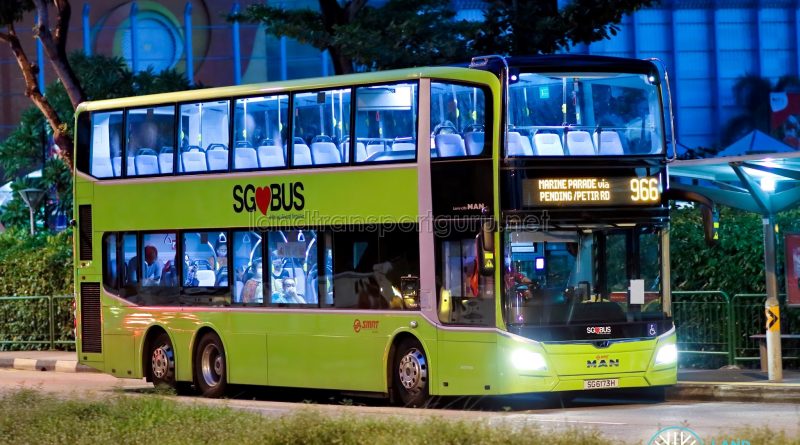
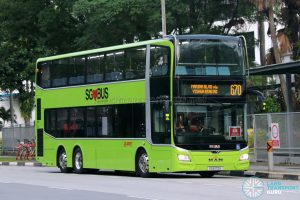

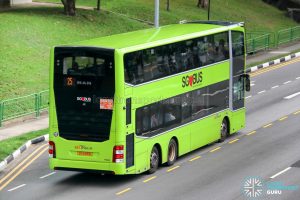
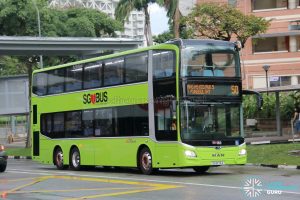
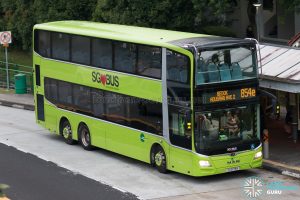
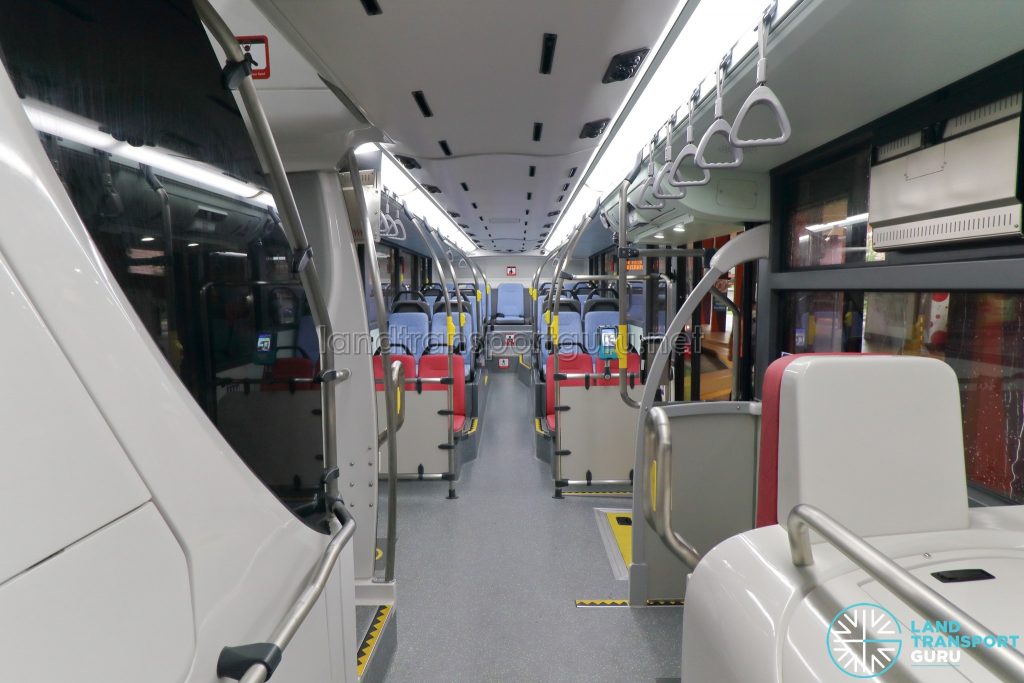



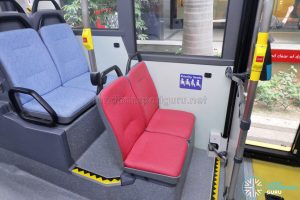
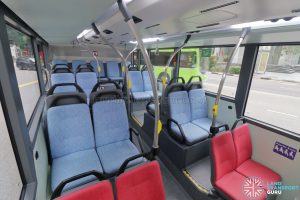
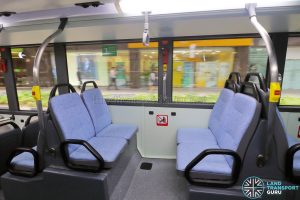
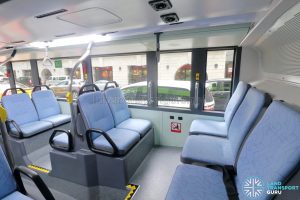
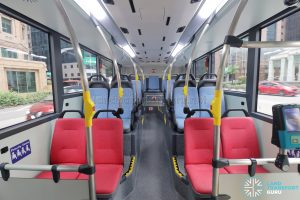
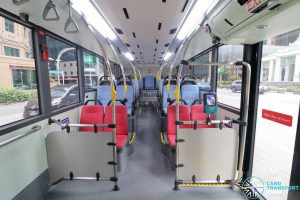


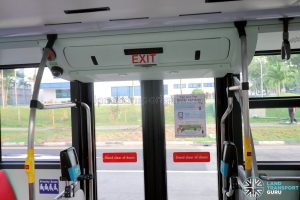
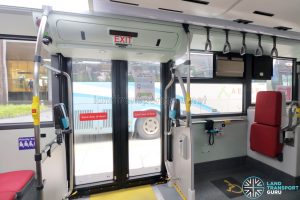
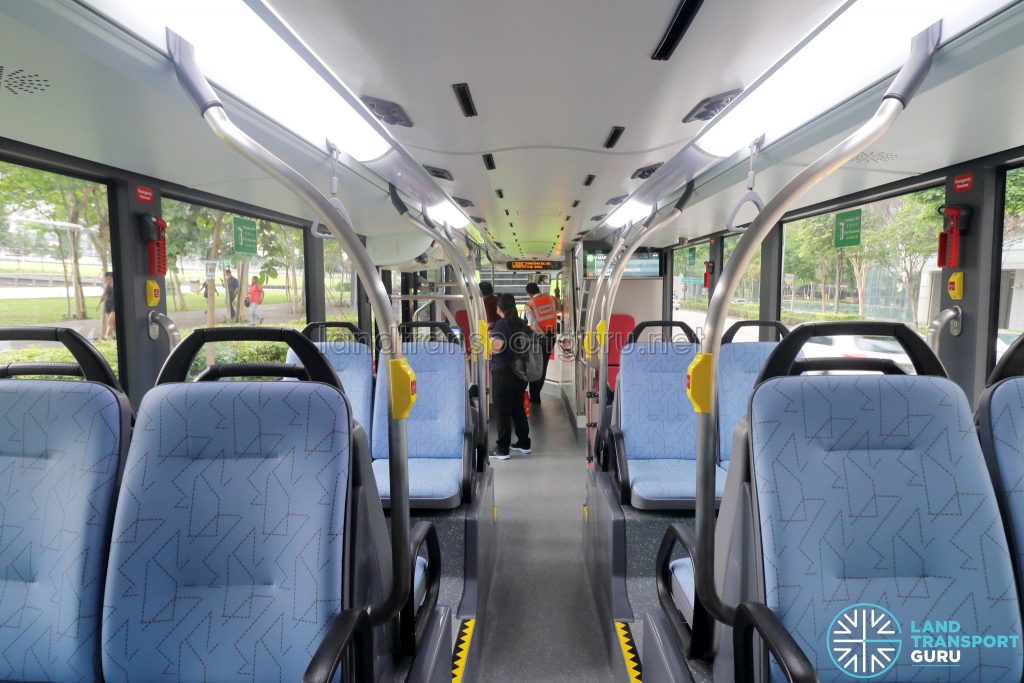

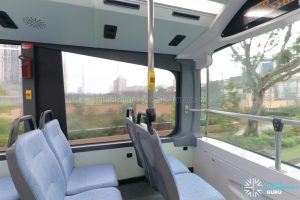
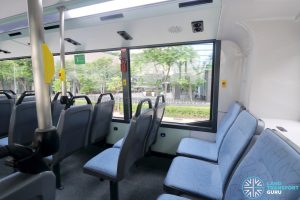

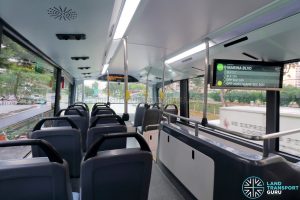
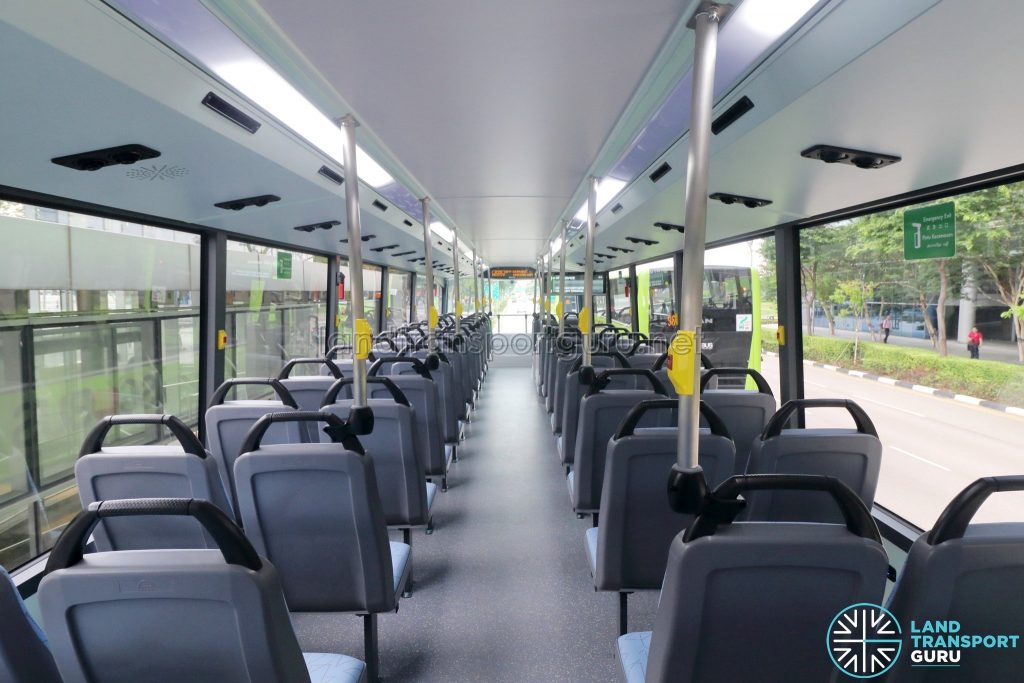
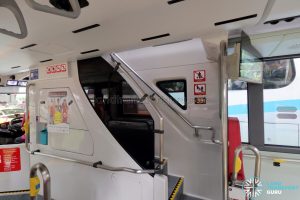
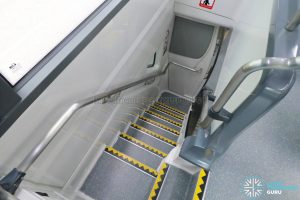
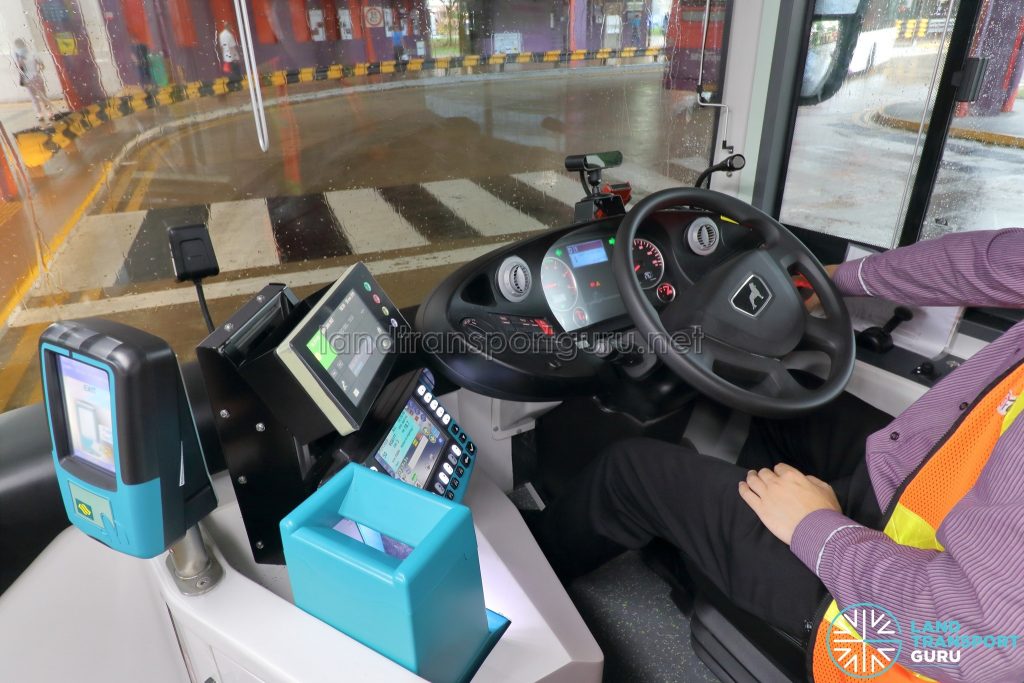
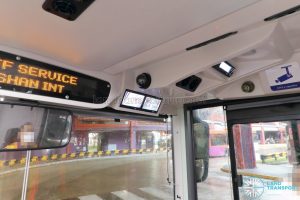
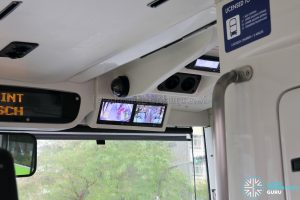
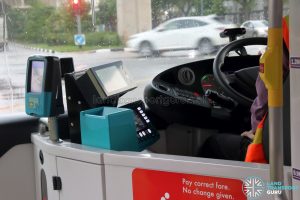
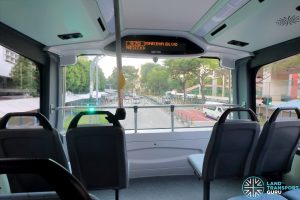
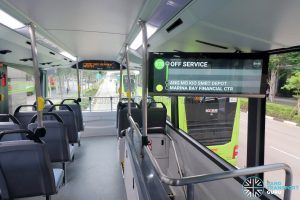
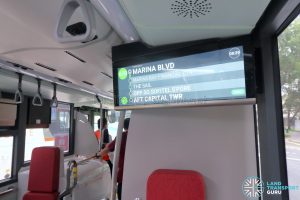
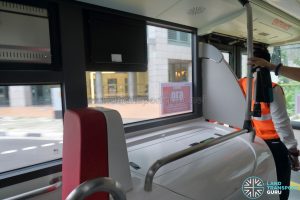
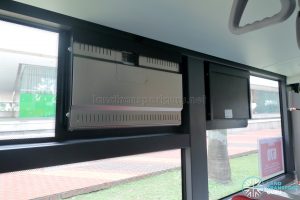
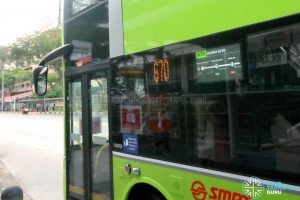
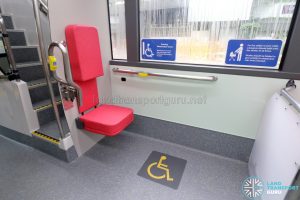
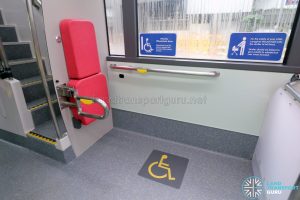
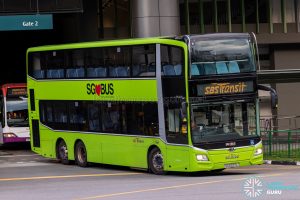
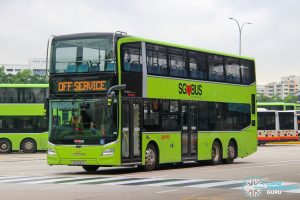
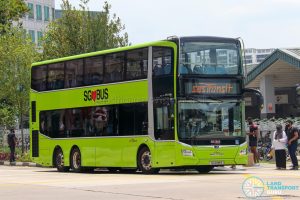

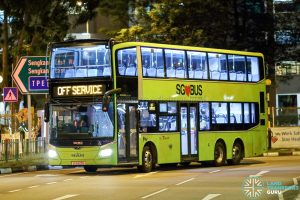
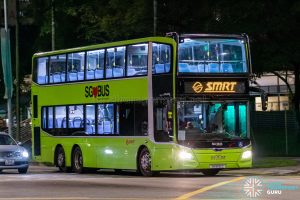
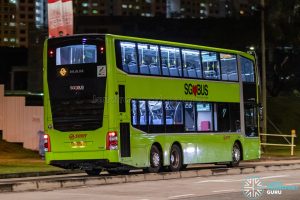
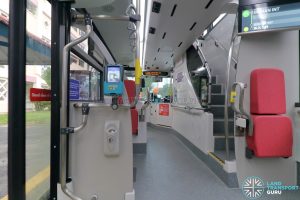
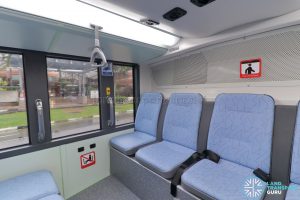
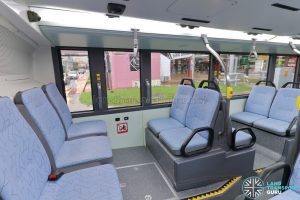
Saw MAN A95 Euro 6 on Go Ahead!
TTSG sent back all 5 of its E6 B2 A95s, SMRT sent back the 2 units in WLDEP to storage.
What’s with them? 🤦♂️
For the replacement of 20 revenue CDGE B9TL.
Actually LTA can just request B9TL from the two operators instead of A95..Sooner or later all B2 will be SBST.
Exactly. Would rather they send back B9TLs and Citaros instead of E6 B2 A95s and SG E5 A22s, make SBST take back its own dominant bus models in its fleet.
Maybe Smrt like using B9TL WEG2 that why they chose to return those MAN A95 E6 Batch 2? I read somewhere that apparently MAN A95 E6 bus tires get worn out easier than other buses. Could be the reason why smrt kept the B9TL & returned B2 E6 MAN A95 instead, it could be consider as trying to cut maintenace cost i guess.
For The Replacement of Volvo B9TL CDGE Buses by 20 Revenue Units,it should be MAN A95 Euro 6 1st Production Batch Buses
LTA Must Buy MAN A95 Euro 6 Again and Again
Should have distributed more to TTSG Mandai and GASG instead of giving so many units to SBST.
I think they give soo many of the units its because of the retirement of the CDGE
TTSG Mandai already have enough DDs for now…. Many A95 (B1//2/3/4), E500 (B1/2) serving them. Only 5 A95 (B5) is fine…. I guess SBST got handful (like half of CDGE quantity) is due to early retirement of CDGE
They’re maximising fleet and practice jumpbus..If more accidents and breakdowns then its doomsday for them.
saw 6233 with SBST logo at front EDS & trade plate today outside lakeside MRT towards JE… to UPDEP?